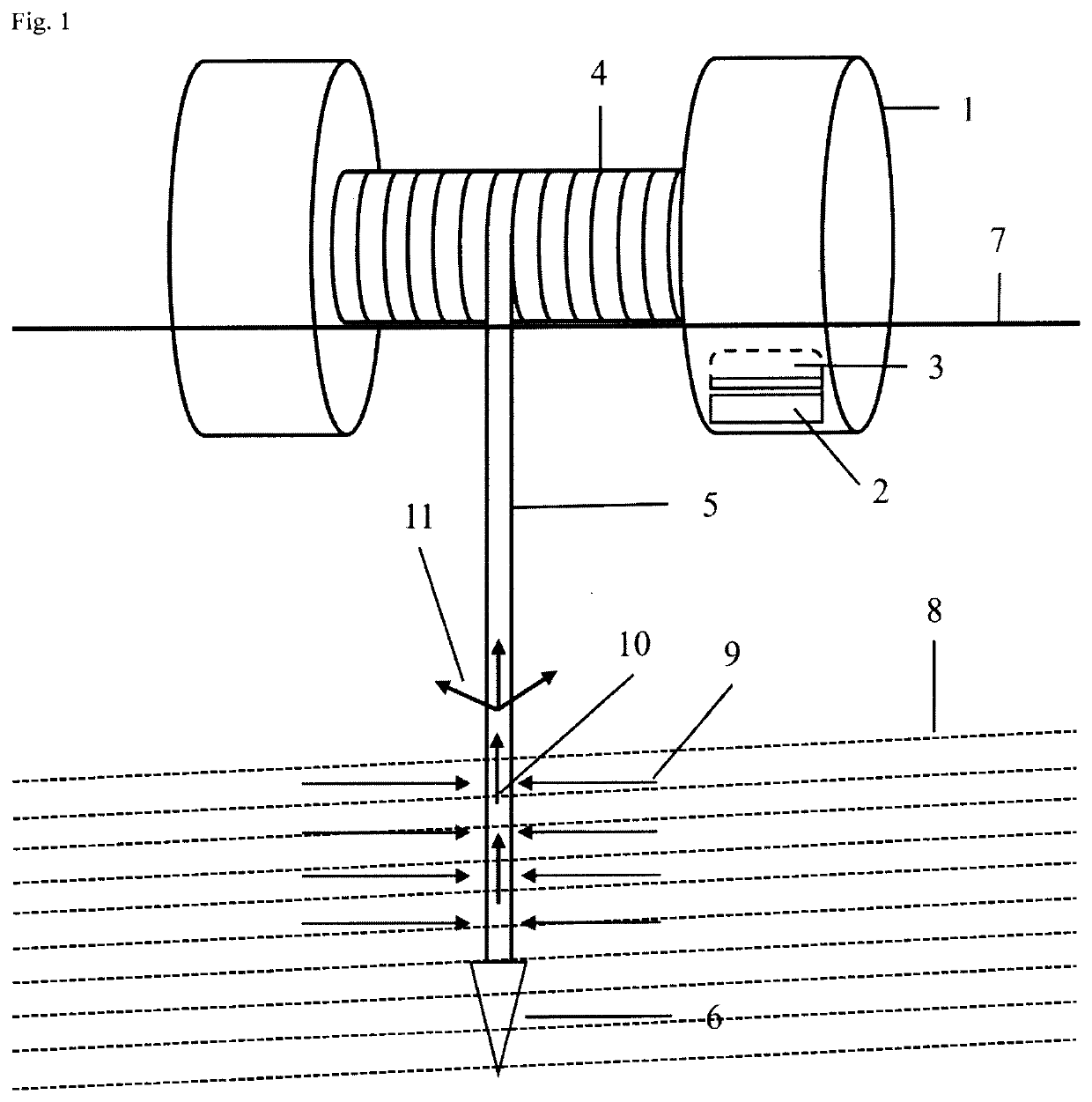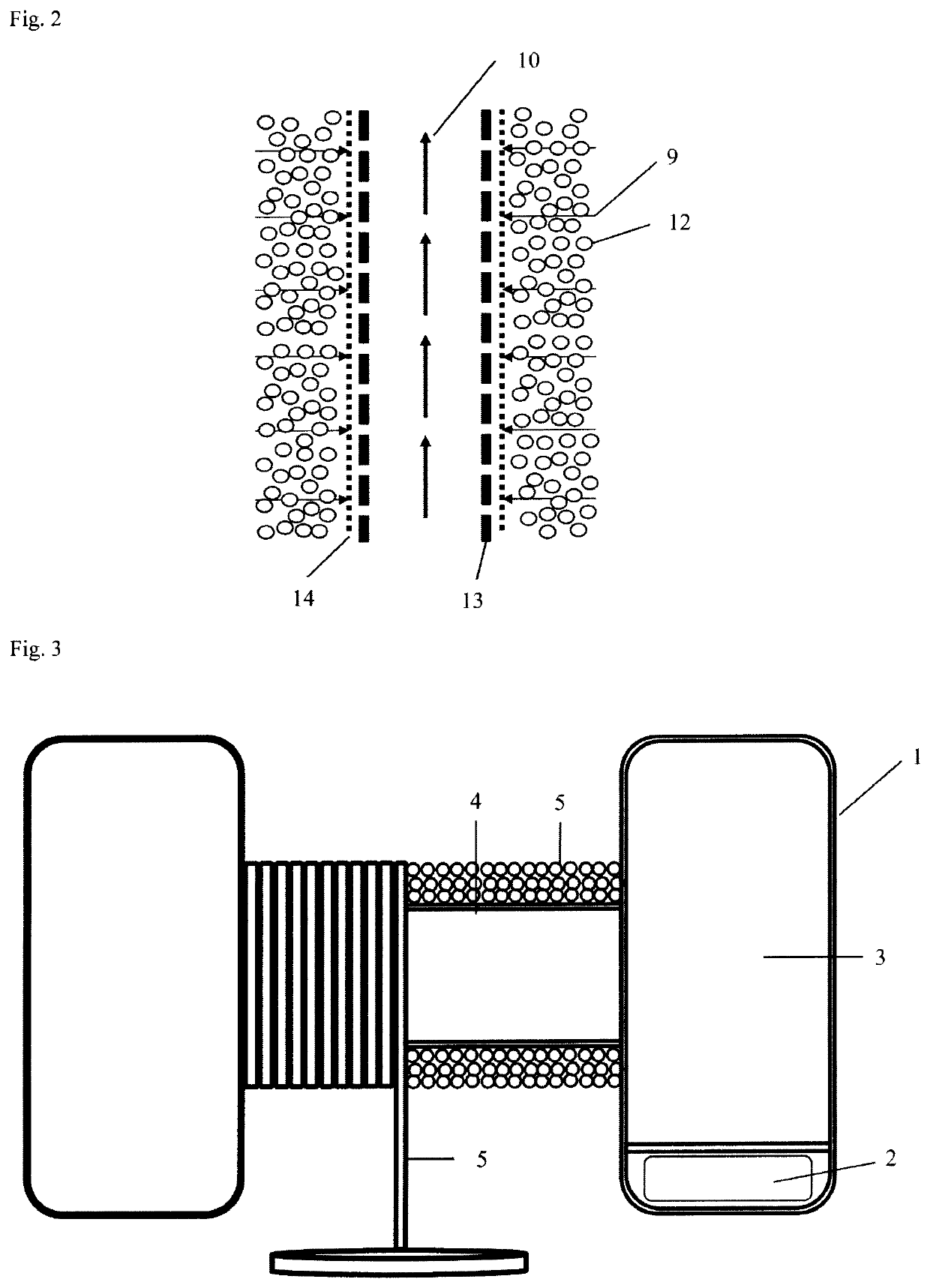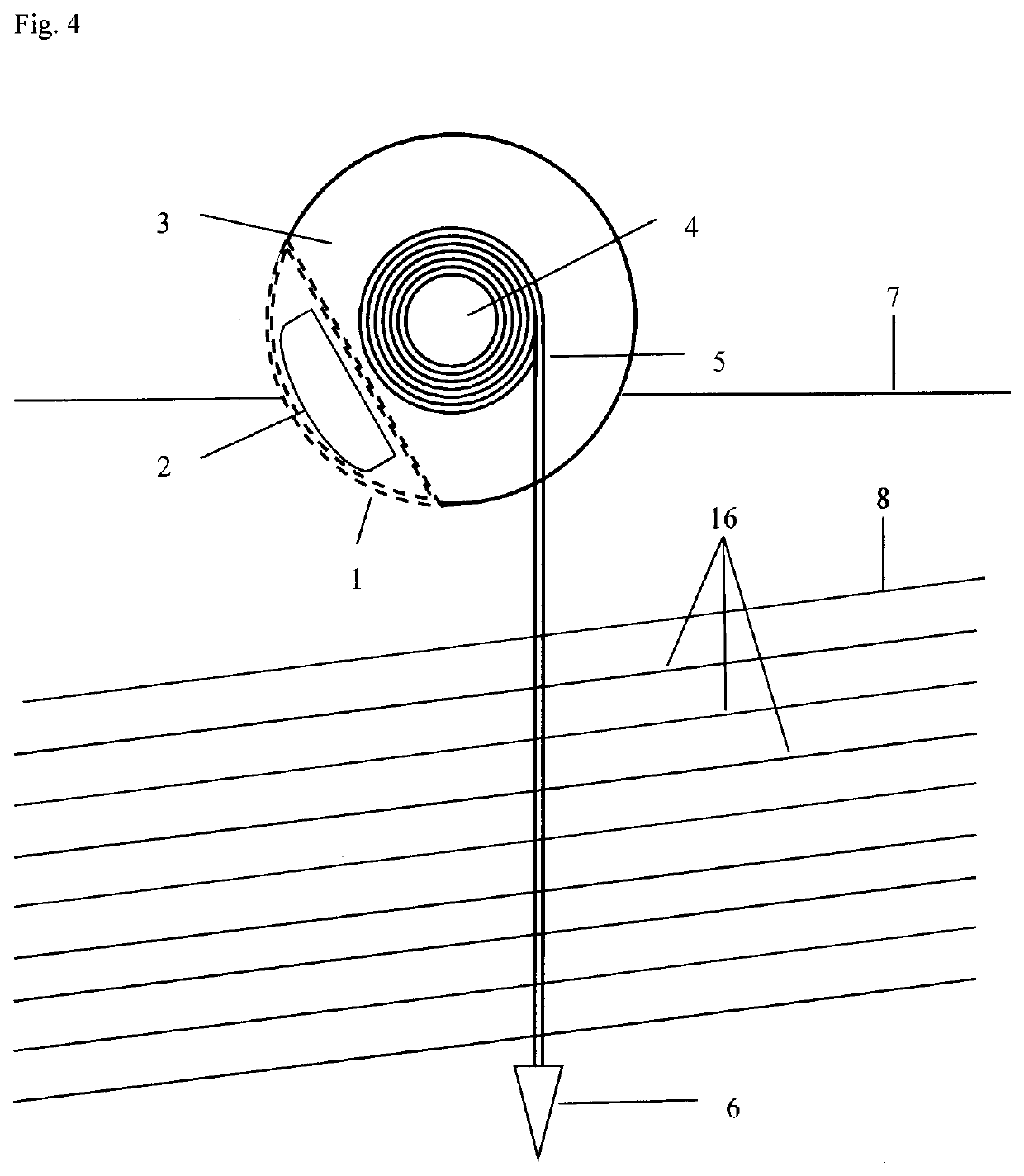Passive tailings compactor
a tailings compactor and tailing technology, applied in the direction of separation processes, geotextiles, chemistry apparatus and processes, etc., can solve the problems of further reducing geotechnical stability and strength, low hydraulic conductivity, and poor geotechnical strength parameters, so as to achieve high hydraulic conductivity and reduce labor costs , the effect of high conductivity
- Summary
- Abstract
- Description
- Claims
- Application Information
AI Technical Summary
Benefits of technology
Problems solved by technology
Method used
Image
Examples
Embodiment Construction
[0019]A system of components which facilitates the continuous release of trapped interstitial water from fine-grained sediments being actively deposited 16 in a containment facility (tailings storage facility) by creating a network of vertical drainage pathways in the sediment materials which are continuously extended upwards in tandem with pond or sediment elevation increases, connecting the surface or supernatant pond to all sediment horizons via a drainage pathway of relatively high hydraulic conductivity. The invention allows for the benefits of sediment consolidation and dewatering to be realized during the continued operation of a facility, and not only after the facility has completed operations and is preparing for remediation. The system is comprised of three primary components: a flotation device, an anchor mass, and a drainage conduit connecting the previous two components. The system extends upwards passively as the depth of sediment and or water increases. A description...
PUM
| Property | Measurement | Unit |
|---|---|---|
| specific gravity | aaaaa | aaaaa |
| length | aaaaa | aaaaa |
| buoyancy | aaaaa | aaaaa |
Abstract
Description
Claims
Application Information
 Login to View More
Login to View More - R&D
- Intellectual Property
- Life Sciences
- Materials
- Tech Scout
- Unparalleled Data Quality
- Higher Quality Content
- 60% Fewer Hallucinations
Browse by: Latest US Patents, China's latest patents, Technical Efficacy Thesaurus, Application Domain, Technology Topic, Popular Technical Reports.
© 2025 PatSnap. All rights reserved.Legal|Privacy policy|Modern Slavery Act Transparency Statement|Sitemap|About US| Contact US: help@patsnap.com



